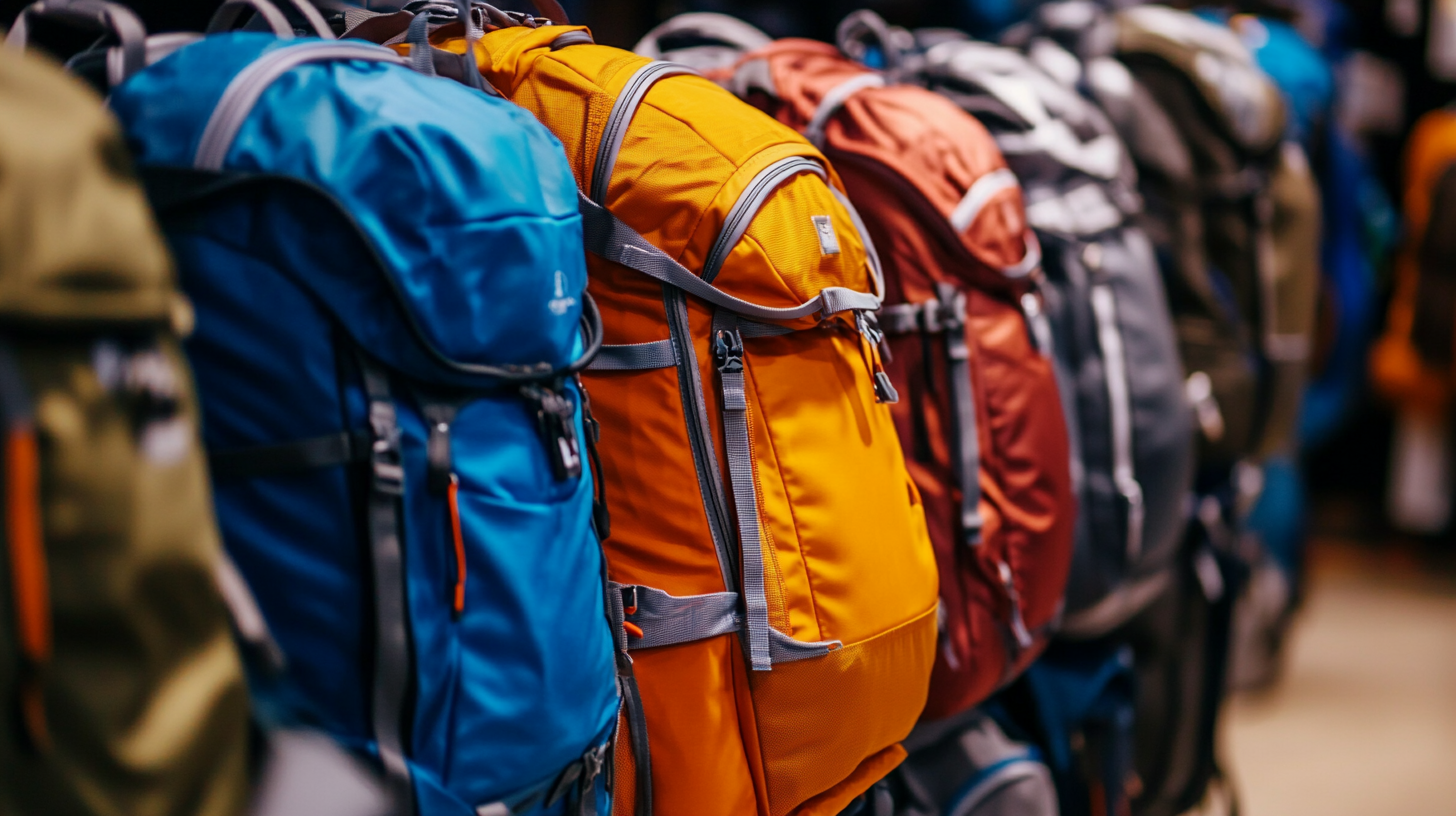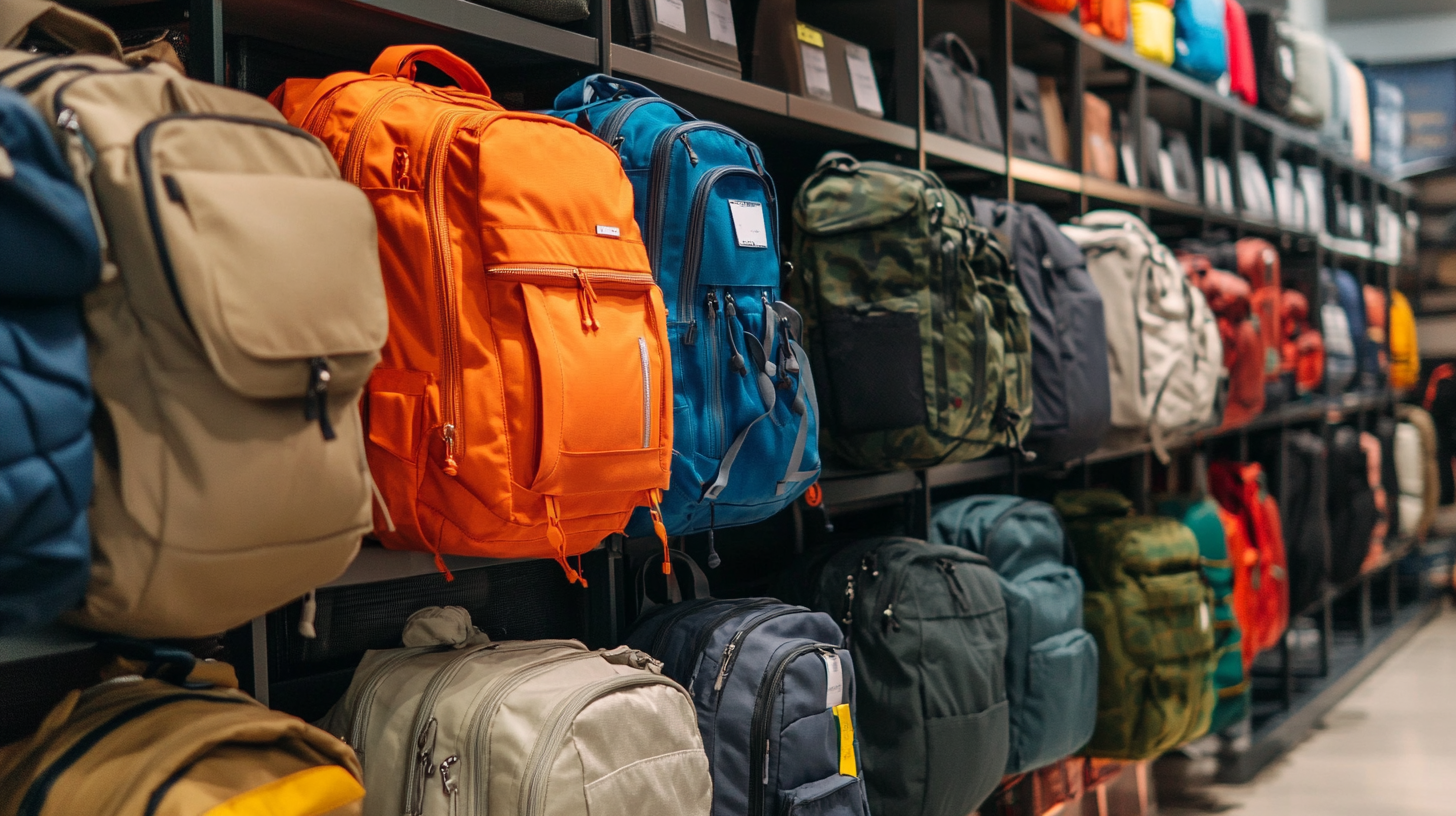Finding Quality Suppliers in the Backpack Industry The Ultimate Resource Guide
As the global backpack industry continues to expand, reaching an estimated market size of $18.5 billion in 2022 with projections to grow at a CAGR of 4.5% through 2030, the need for quality suppliers has never been more critical. Backpack manufacturers face increasing pressure to not only deliver innovative designs and materials but also provide exceptional after-sales service and manage repair costs effectively. A recent survey indicated that 74% of consumers consider ongoing support a key factor in their purchasing decisions, highlighting the importance of building strong supplier relationships. This guide aims to navigate the intricate landscape of finding reliable suppliers in the backpack sector, focusing on the advantages of after-sales service and cost-efficient maintenance strategies that can enhance brand loyalty and customer satisfaction.

Identifying Top Backpack Manufacturers: Key Market Trends and Insights
In the rapidly evolving backpack industry, understanding market trends and supplier insights is crucial for manufacturers looking to thrive. According to a recent report by Research and Markets, the global backpack market is expected to grow at a CAGR of 5.2% from 2022 to 2027, driven by increasing consumer demand for functional and stylish backpacks. This growth is largely influenced by generational shifts, notably among millennials and Gen Z, who prioritize sustainability and brand authenticity when making purchasing decisions.

One key trend observed is the rising importance of eco-friendly materials in backpack design. With a significant percentage of consumers willing to pay a premium for sustainable products, manufacturers that focus on sourcing recycled or biodegradable materials can capture a larger market share. Additionally, innovations in technology, such as the integration of smart features in backpacks, are gaining traction. According to a study by Allied Market Research, the smart backpack segment is projected to reach $1.5 billion by 2025, highlighting the increasing demand for products that seamlessly blend functionality with modern tech capabilities. This insight into consumer preferences and market dynamics is essential for identifying top backpack manufacturers who can adapt and innovate in a competitive landscape.
Evaluating Supplier Credentials: Quality Standards and Certifications in the Backpack Sector
 When sourcing suppliers in the backpack industry, it’s crucial to evaluate their credentials effectively. High-quality backpacks are not just about aesthetic appeal; they require robust materials and manufacturing processes that meet established quality standards. Begin by looking for suppliers that possess industry-recognized certifications, such as ISO 9001, which indicates a commitment to quality management systems. Additionally, certifications like REACH or OEKO-TEX signify compliance with environmental and safety regulations, ensuring the materials used are safe for consumers.
When sourcing suppliers in the backpack industry, it’s crucial to evaluate their credentials effectively. High-quality backpacks are not just about aesthetic appeal; they require robust materials and manufacturing processes that meet established quality standards. Begin by looking for suppliers that possess industry-recognized certifications, such as ISO 9001, which indicates a commitment to quality management systems. Additionally, certifications like REACH or OEKO-TEX signify compliance with environmental and safety regulations, ensuring the materials used are safe for consumers.
Beyond certifications, consider the supplier's experience and reputation in the market. Established suppliers often have a track record of working with notable brands and can provide client testimonials or case studies that showcase their reliability and quality assurance processes. Request samples to assess the craftsmanship and durability of their products firsthand. By prioritizing suppliers with strong credentials and proven quality standards, you can ensure that your backpack line not only meets market demands but also builds a reputation for excellence in the competitive outdoor gear sector.
Sourcing Materials: Understanding Sustainable Practices in the Backpack Industry
In the pursuit of sourcing materials for backpacks, an increasing focus on sustainable practices is reshaping the industry landscape. Recent studies indicate that consumers are willing to pay an average of 9.7% more for sustainably sourced goods, reflecting a growing trend towards eco-conscious purchasing decisions. This consumer shift is prompting manufacturers to adopt Green Supply Chain Management (GSCM) practices, which emphasize sustainable sourcing and production methods. Key findings from various reports show that companies leveraging GSCM approaches have not only reduced their environmental impact but also improved their overall operational efficiency.
The backpack industry, in particular, is seeing a rise in brands utilizing recycled and eco-friendly materials, a move driven by both consumer demand and regulatory pressure. With fashion often contributing significantly to global carbon emissions, it's critical for industry players to implement robust sustainability strategies that consider the entire product lifecycle. Reports highlight that innovative practices, such as integrating biodegradable components and using water-efficient production processes, are becoming essential for brands aiming to establish themselves as leaders in sustainability. This alignment with sustainable practices not only mitigates environmental harm but also builds brand loyalty in a competitive market, where responsible practices can set a brand apart from its peers.
Global Sourcing Strategies: Navigating Tariffs and Trade Agreements for Suppliers
Navigating the complex landscape of tariffs and trade agreements is essential for sourcing quality suppliers in the backpack industry. With a global market projected to reach $18.5 billion by 2025 (Mordor Intelligence), understanding international trade regulations can give companies a significant edge. The implementation of the US-China Phase One deal, for instance, has provided a clearer framework for tariffs on textile imports, aiding suppliers in strategic planning and cost management.
**Tip:** Always stay informed about the latest trade agreements and tariff changes. Subscribe to trade publications and government bulletins, which often provide updates on relevant international policies that could impact your sourcing strategies.
Another vital consideration is utilizing technology in supply chain management. Tools like AI and data analytics can help businesses analyze supplier performance against current trade conditions, ensuring optimal decision-making. Reports indicate that companies leveraging advanced supply chain technologies see a 15% improvement in supplier performance metrics (Gartner).
**Tip:** Regularly assess supplier relationships and performance metrics in light of geopolitical changes. Building a diversified supplier base can mitigate risks associated with sudden tariff shifts and protect your business against potential supply chain disruptions.
Supplier Quality Assessment in the Backpack Industry
Building Long-Term Partnerships: Best Practices for Collaboration with Backpack Suppliers
In the backpack industry, building long-term partnerships with suppliers is crucial for resilience and adaptability, particularly in today’s volatile market. Leaders in various sectors have consistently emphasized that tackling supply chain challenges is essential for sustainable growth and recovery. For instance, a recent survey indicated that 70% of businesses believe that developing strong supplier relationships directly contributes to supply chain flexibility, enabling companies to pivot quickly in response to disruptions.
Establishing a collaborative framework with suppliers can also enhance information sharing, which is vital for tackling complex issues like sustainability. As noted in various industry reports, engaging suppliers in discussions around Scope 3 emissions—which pertain to indirect emissions throughout the supply chain—can yield significant benefits. Over 80% of a typical company's greenhouse gas emissions occur in this category, underlining the importance of partnership in achieving long-term environmental goals. By aligning objectives with suppliers, companies can create innovative solutions that not only enhance product quality but also drive sustainable practices across the industry.
Moreover, integrating strategic partnerships can lead to a more robust supply chain, enabling businesses to withstand shocks and fluctuations. A recent report highlighted that companies with stronger supplier networks were 30% more likely to successfully navigate supply chain disruptions. By investing in these long-term relationships, businesses in the backpack industry can better position themselves for future challenges, ensuring not only their profitability but also their commitment to sustainable practices.
Finding Quality Suppliers in the Backpack Industry
| Supplier Type | Location | Minimum Order Quantity | Lead Time | Sustainability Practices |
|---|---|---|---|---|
| Fabric Supplier | China | 1000 yards | 4 weeks | Organic materials, water recycling |
| Hardware Supplier | Vietnam | 500 units | 3 weeks | Eco-friendly packaging |
| Manufacturer | India | 3000 units | 6 weeks | Fair Trade certification |
| Packaging Supplier | USA | 250 units | 2 weeks | Recycled materials |